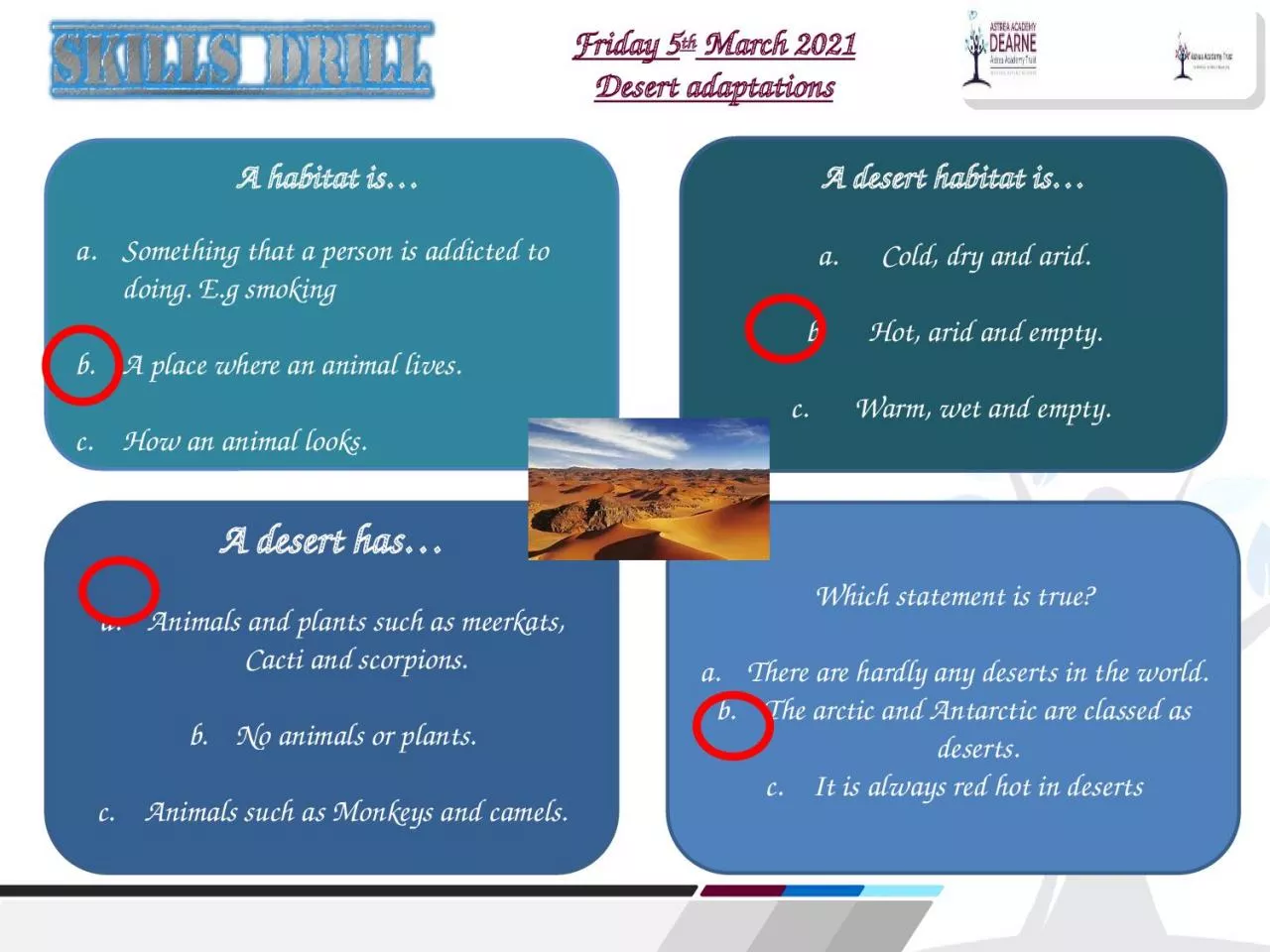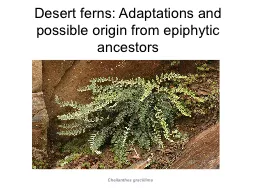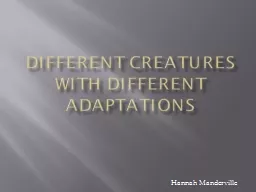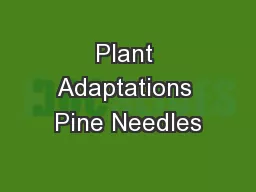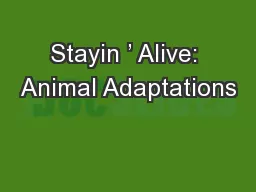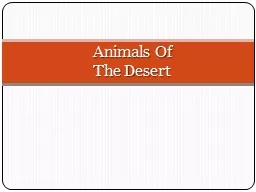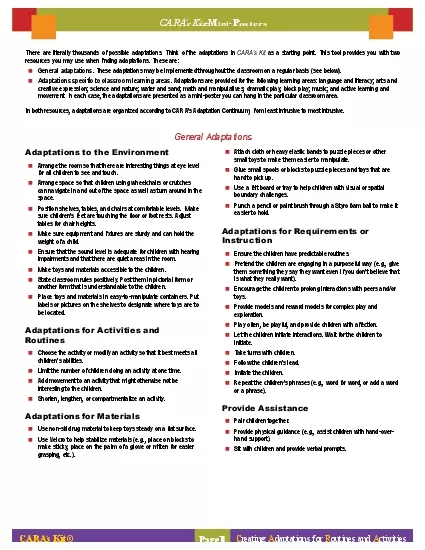PPT-Friday 5 th March 2021 Desert adaptations
Author : lauren | Published Date : 2024-03-13
A habitat is Something that a person is addicted to doing Eg smoking A place where an animal lives How an animal looks A desert habitat is Cold dry and arid Hot
Presentation Embed Code
Download Presentation
Download Presentation The PPT/PDF document "Friday 5 th March 2021 Desert adaptatio..." is the property of its rightful owner. Permission is granted to download and print the materials on this website for personal, non-commercial use only, and to display it on your personal computer provided you do not modify the materials and that you retain all copyright notices contained in the materials. By downloading content from our website, you accept the terms of this agreement.
Friday 5 th March 2021 Desert adaptations: Transcript
Download Rules Of Document
"Friday 5 th March 2021 Desert adaptations"The content belongs to its owner. You may download and print it for personal use, without modification, and keep all copyright notices. By downloading, you agree to these terms.
Related Documents

